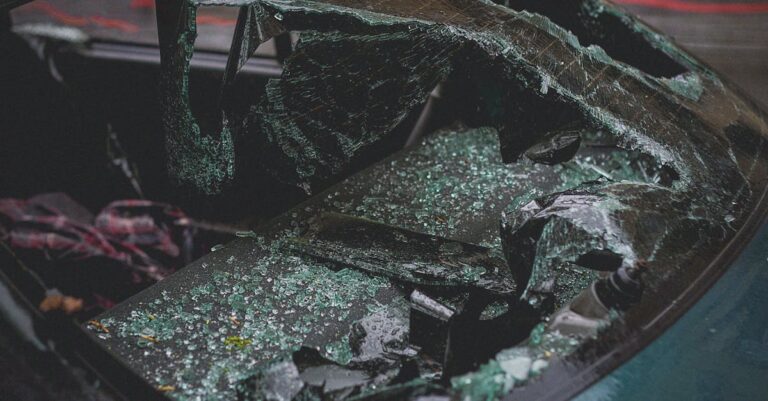Table of Contents
Understanding Your Car Warranty: Don’t Get Caught Out!
What Exactly *Is* a Car Warranty?
Think of it Like a Safety Net
Why Do Manufacturers Offer Them?
Decoding the Different Types of Manufacturer Warranties
The Big Kahuna: Bumper to Bumper Warranty
What’s Typically Covered?
What’s Often *Not* Covered?
The Engine Room Hero: Powertrain Warranty
Core Components Explained
Fighting the Elements: Corrosion Warranty
Emissions Warranty: Keeping it Clean
Roadside Assistance: Your Roadside Buddy
Reading the Fine Print: Key Warranty Terms You MUST Know
Duration: Time vs. Mileage
Deductibles: What You Might Pay
Exclusions: The ‘Not Covered’ List
Maintenance Requirements: Staying Compliant
Extended Warranties: Are They Worth It?
Manufacturer vs. Third Party Extended Warranties
Pros and Cons to Weigh
Making a Warranty Claim: The Process
Steps to Take When Something Goes Wrong
Common Pitfalls to Avoid
Voiding Your Warranty: What NOT to Do
Aftermarket Modifications
Missed Maintenance
Using Non Approved Fluids/Parts
Salvage Title or Major Accidents
Transferring a Warranty: Selling Your Car?
Conclusion: Your Warranty is Your Ally
Frequently Asked Questions (FAQs)
FAQ 1: Can I use an independent mechanic for routine maintenance without voiding my warranty?
FAQ 2: What’s the difference between a warranty and car insurance?
FAQ 3: Does using aftermarket parts automatically void my entire warranty?
FAQ 4: How do I find out exactly what my specific car’s warranty covers?
FAQ 5: Is an extended warranty the same as a service contract?
Article
Understanding Your Car Warranty: Don’t Get Caught Out!
So, you’ve just bought a shiny new (or maybe new to you) car. Congratulations! Amidst the excitement, the paperwork, and that intoxicating new car smell, there’s one document often glanced over but incredibly important: the warranty. You might think, “It’s just a piece of paper, right? Something about repairs?” Well, yes and no. Your car warranty is way more than just a formality; it’s a promise from the manufacturer, a financial safety net, and something you really need to understand to get the most out of your vehicle ownership.
Let’s be honest, warranty booklets aren’t exactly page turners. They’re often dense, full of legalese, and can feel overwhelming. But ignoring it? That could cost you big time down the road. What if a major component fails? Who pays? What if you need a tow? Is that covered? Knowing the ins and outs of your specific warranty can save you hassle, money, and a whole lot of stress. Ready to dive in and become a warranty whiz? Let’s demystify this crucial part of owning a car.
What Exactly *Is* a Car Warranty?
At its core, a car warranty is a written guarantee from the vehicle manufacturer (or sometimes a third party seller) promising to repair or replace specific parts of your vehicle if they fail due to a manufacturing defect within a certain period or mileage limit. It’s essentially the car maker saying, “Hey, we stand by our product. If something we built breaks prematurely because *we* messed up, we’ll fix it on our dime.”
Think of it Like a Safety Net
Imagine you’re walking a tightrope. The warranty is like the safety net below. You hope you never need it, but it’s incredibly reassuring to know it’s there if you stumble (or if, in this case, your transmission suddenly decides it prefers neutral). It protects you, the consumer, from footing the bill for faulty parts or shoddy workmanship that weren’t your fault. This is especially crucial in the early years of ownership when unexpected major repairs could really throw a wrench in your finances.
Why Do Manufacturers Offer Them?
Why would companies willingly offer to pay for potentially expensive repairs? Several reasons! Firstly, it’s a massive confidence booster for buyers. A strong warranty signals that the manufacturer believes in the quality and reliability of their vehicles. It says, “We built this car to last, and we’re willing to back that up.” Secondly, it’s a competitive tool. Manufacturers often use warranty length and coverage to differentiate themselves from rivals. A longer, more comprehensive warranty can be a major selling point. Finally, in many places, certain basic warranty protections are required by law (like emissions warranties) to protect consumers and the environment.
Decoding the Different Types of Manufacturer Warranties
Not all warranties are created equal. When you get a new car, it typically comes with a package of different warranties, each covering specific aspects of the vehicle for varying durations. Let’s break down the usual suspects:
The Big Kahuna: Bumper to Bumper Warranty
This is often called the “comprehensive” or “new vehicle limited warranty,” and it’s usually the most extensive coverage you get initially. The name “bumper to bumper” is a bit of a misnomer because it doesn’t *literally* cover everything between the bumpers (we’ll get to exclusions), but it covers the vast majority of your car’s components.
What’s Typically Covered?
Think about most things that aren’t part of the powertrain (engine, transmission, drivetrain – more on that next) or considered “wear and tear” items. This often includes:
- Electrical systems (power windows, infotainment system, sensors)
- Air conditioning and heating
- Steering components
- Suspension parts
- Safety features (airbags, seatbelt mechanisms)
- Most other mechanical and electrical parts not specifically excluded.
This warranty usually lasts for a shorter duration than the powertrain warranty, commonly something like 3 years or 36,000 miles, whichever comes first, although terms vary significantly by manufacturer.
What’s Often *Not* Covered?
This is crucial! Bumper to bumper warranties typically *exclude* items expected to wear out through normal use. These are often called “wear items” or “maintenance items.” Examples include:
- Tires (usually have their own separate warranty from the tire maker)
- Brake pads and rotors
- Wiper blades
- Filters (oil, air, fuel)
- Fluids (oil, coolant, brake fluid – unless loss is due to a covered part failing)
- Clutch linings (on manual transmissions)
- Paint chips, cosmetic issues, glass damage (unless proven defect)
- Damage from accidents, misuse, neglect, or environmental factors (like hail).
Always read your specific warranty booklet to see the exact exclusion list.
The Engine Room Hero: Powertrain Warranty
This warranty specifically covers the heart and muscles of your car – the components that make it go. It typically lasts longer than the bumper to bumper warranty, often 5 years/60,000 miles or even 10 years/100,000 miles for some manufacturers. It’s designed to cover the most expensive and critical parts of the vehicle.
Core Components Explained
What exactly *is* the powertrain? It generally includes:
- Engine: Internal components like pistons, crankshaft, cylinder block, cylinder heads, timing chain/belt (check specifics!), oil pump.
- Transmission: Internal components of automatic or manual transmissions, torque converter.
- Drivetrain: Axles, driveshafts, differentials, transfer case (if applicable, like in 4WD/AWD vehicles).
It usually *doesn’t* cover things attached to the engine, like the alternator, starter, radiator, or hoses, unless they are explicitly listed. These items are more likely covered under the bumper to bumper warranty while it’s active.
Fighting the Elements: Corrosion Warranty
This warranty protects against rust perforation – basically, rust holes forming from the inside out due to defects in materials or workmanship. It usually lasts for a long time, sometimes 5, 7, or even 12 years, often with unlimited mileage. However, it typically *doesn’t* cover surface rust caused by paint chips or scratches from road debris or environmental factors. Proving the rust started from a manufacturing defect can sometimes be tricky.
Emissions Warranty: Keeping it Clean
Mandated by federal law (like the Clean Air Act in the U.S.), this warranty covers components related to your car’s emissions control system. If your car fails an emissions test due to a faulty covered part, the repair should be covered. There are usually two parts: a shorter term warranty covering most emissions components (often aligning with the bumper to bumper) and a longer term warranty covering specific major components like the catalytic converter and engine control unit (ECU), often for 8 years or 80,000 miles.
Roadside Assistance: Your Roadside Buddy
While not technically a “repair” warranty, many manufacturers include complimentary roadside assistance for a period, often matching the bumper to bumper warranty term. This can be a lifesaver! Coverage typically includes things like:
- Towing (usually to the nearest authorized dealer)
- Battery jump starts
- Flat tire changes (using your spare)
- Lockout assistance
- Emergency fuel delivery
Check the details – there might be limits on the number of service calls or the distance for towing.
Reading the Fine Print: Key Warranty Terms You MUST Know
Okay, you know the types of warranties, but understanding the *details* within that warranty booklet is paramount. Here are some key terms and concepts you absolutely need to grasp:
Duration: Time vs. Mileage
Nearly all warranties have limits based on both time (years) and distance (miles). The warranty expires when you hit *whichever limit comes first*. So, a 3 year/36,000 mile warranty ends after 3 years, even if you’ve only driven 20,000 miles. Conversely, it ends if you hit 36,000 miles in just 2 years. Keep track of both!
Deductibles: What You Might Pay
While manufacturer warranties often have a $0 deductible (meaning you pay nothing out of pocket for covered repairs), this isn’t always the case, especially with *extended* warranties or some specific coverages. A deductible is a fixed amount you have to pay per repair visit before the warranty coverage kicks in. Make sure you know if any of your warranties require a deductible.
Exclusions: The ‘Not Covered’ List
We touched on this with the bumper to bumper, but *every* warranty has exclusions. This list details exactly what parts or situations are *not* covered. Common exclusions across different warranties include damage from accidents, racing, misuse, neglect, improper maintenance, alterations, environmental damage (floods, hail), and wear and tear items. Read this section carefully!
Maintenance Requirements: Staying Compliant
This is a HUGE one! Your manufacturer requires you to perform regular maintenance as outlined in your owner’s manual (oil changes, fluid checks, filter replacements, etc.). Failing to keep up with required maintenance, or failing to keep records proving you did, can give the manufacturer grounds to deny a warranty claim, especially if the failure could be linked to neglect. You don’t *have* to get maintenance done at the dealership (more on that later), but you *do* need to do it and keep proof.
Extended Warranties: Are They Worth It?
Once your manufacturer warranties start expiring, you might be offered (or seek out) an extended warranty, also often called a vehicle service contract. These are essentially insurance policies against future repair costs. But are they a good deal?
Manufacturer vs. Third Party Extended Warranties
You can typically buy extended coverage either directly from the car manufacturer (often called a “factory extended warranty”) or from independent, third party companies.
- Manufacturer Warranties: Often preferred because repairs are usually done at authorized dealerships with factory trained technicians using genuine parts. They might integrate more smoothly with existing coverage.
- Third Party Warranties: Can sometimes be cheaper or offer more customizable coverage levels. However, quality varies wildly. Some are reputable, others less so. You need to carefully vet the company, understand exactly what’s covered (coverage levels can range from basic powertrain to near bumper to bumper), know where you can get repairs done (approved shops only?), and understand the claims process and deductible. Be very cautious of unsolicited calls or mailers offering cheap extended warranties – many are scams or offer very limited coverage.
Pros and Cons to Weigh
Pros:
- Peace of mind against unexpected, expensive repairs after the factory warranty expires.
- Predictable budgeting for repairs (often just a deductible, if any).
- Can sometimes include perks like roadside assistance or rental car coverage.
Cons:
- Cost: They can be expensive, sometimes adding thousands to your vehicle purchase or paid upfront.
- You might never use it: If your car proves reliable, you’ve paid for coverage you didn’t need. Consumer Reports often finds that the cost of the warranty outweighs the cost of repairs paid out.
- Coverage limitations: Even the best extended warranties have exclusions and deductibles. They rarely cover everything the original bumper to bumper did.
- Potential for claims hassles, especially with some third party providers.
The decision depends on your risk tolerance, the perceived reliability of your specific car model, how long you plan to keep the car, and your financial situation. If a single $2,000 repair bill would devastate your budget, an extended warranty might offer valuable peace of mind. If you can comfortably self insure (i.e., save money for potential repairs), you might be better off skipping it.
Making a Warranty Claim: The Process
So, the unfortunate happens – something breaks, and you think it should be covered by warranty. What do you do?
Steps to Take When Something Goes Wrong
- Consult Your Warranty Booklet: First, double check if the suspected issue and component are likely covered under your active warranty terms (considering time, mileage, and exclusions).
- Contact an Authorized Dealership: For manufacturer warranties, you’ll almost always need to take the vehicle to a dealership authorized by the manufacturer for warranty service. Call them, explain the issue, and schedule an appointment.
- Provide Documentation: Bring your warranty information and, crucially, your maintenance records if requested.
- Explain the Problem Clearly: Describe the symptoms accurately and thoroughly to the service advisor. Mention you believe it should be a warranty repair.
- Authorize Diagnosis (if needed): The dealership will need to diagnose the problem to confirm it’s a warrantable defect. Sometimes there’s a diagnostic fee, which *should* be waived or covered by the warranty if the repair *is* covered. Clarify this upfront.
- Review the Repair Order: Once diagnosed, ensure the repair order clearly states the work being done under warranty (often showing a cost of $0.00 to you, possibly excluding a deductible if applicable).
- Keep Records: Keep copies of all repair orders and communication, even for warranty work.
Common Pitfalls to Avoid
- Assuming Coverage: Don’t assume something is covered. Verify first.
- Going to an Independent Shop (for warranty work): Manufacturer warranties require repairs at authorized dealers. Going elsewhere for a warranty repair means you’ll likely pay out of pocket and won’t be reimbursed. (Routine maintenance is different – see FAQs).
- Authorizing Unnecessary Work: Be clear about only authorizing the warranty repair unless you explicitly agree to pay for additional services.
- Lack of Maintenance Records: This is a big reason for claim denial. Keep meticulous records!
- Ignoring the Problem: Letting a small issue fester until it causes major damage might lead to a denied claim if neglect is determined. Address potential warranty issues promptly.
Voiding Your Warranty: What NOT to Do
Perhaps the biggest fear surrounding warranties is accidentally “voiding” it. While it’s rare for an entire warranty to be voided completely, certain actions can lead to the manufacturer denying claims for specific components or systems.
Aftermarket Modifications
Adding non factory parts (like performance chips, custom exhausts, altered suspension) *can* cause issues. The key here is the Magnuson Moss Warranty Act (in the U.S.), which states a manufacturer cannot void your warranty *just* because you used an aftermarket part. However, if that aftermarket part *causes* a failure in a warranted component, they *can* deny the claim for that specific failure. For example, if you install a turbocharger on a non turbo engine and the engine blows, they can likely deny the engine repair claim. Simple cosmetic mods are usually fine.
Missed Maintenance
As mentioned before, failing to perform and document required maintenance (oil changes, fluid flushes, etc.) according to the schedule in your owner’s manual is a major risk. If your engine seizes because you never changed the oil, don’t expect the powertrain warranty to cover it.
Using Non Approved Fluids/Parts
Your owner’s manual specifies the types of fluids (oil viscosity, coolant type, etc.) and sometimes parts (like specific filters) that should be used. Using the wrong stuff can cause damage and lead to denied claims if that damage is linked to the incorrect product.
Salvage Title or Major Accidents
If a vehicle is declared a total loss by an insurance company and issued a salvage title, this typically voids any remaining manufacturer warranties. Major accidents, even if repaired, can also lead to warranty claim denials if the damage relates to the accident affected area.
Other actions like racing, overloading the vehicle, or tampering with the odometer can also jeopardize your warranty coverage.
Transferring a Warranty: Selling Your Car?
Good news! Most manufacturer warranties (bumper to bumper, powertrain, etc.) are transferable to subsequent owners at no cost. This can be a great selling point when you decide to part ways with your vehicle. The warranty follows the car, not the owner. Just make sure the new owner gets the warranty booklet and understands the remaining coverage terms. Extended warranties, however, may or may not be transferable, and often involve a fee and paperwork if they are. Check the specific contract terms.
Conclusion: Your Warranty is Your Ally
Whew! That was a lot, wasn’t it? But hopefully, you now see your car’s warranty not as a confusing piece of paper, but as a valuable tool and a form of protection. It’s the manufacturer’s vote of confidence in their product and your shield against certain unexpected repair costs. Understanding the different types of coverage, knowing the duration and mileage limits, religiously following the maintenance schedule (and keeping proof!), and being aware of exclusions are your keys to making the warranty work for you.
Don’t just file that booklet away. Take the time to actually *read* it for your specific vehicle. Know your rights, know your responsibilities, and drive with a little more peace of mind knowing what’s covered if something goes wrong. Your warranty is there to help – make sure you know how to use it!
Frequently Asked Questions (FAQs)
FAQ 1: Can I use an independent mechanic for routine maintenance without voiding my warranty?
Absolutely! Thanks to laws like the Magnuson Moss Warranty Act in the US, manufacturers cannot require you to have routine maintenance (like oil changes, tire rotations, filter replacements) performed at their dealership to keep your warranty valid. You can use your trusted local mechanic. The crucial part is that you *must* follow the maintenance schedule outlined in your owner’s manual and *keep detailed records* (receipts, service logs) proving the maintenance was done on time using appropriate parts and fluids.
FAQ 2: What’s the difference between a warranty and car insurance?
Think of it this way: a warranty covers repairs for defects in manufacturing or materials – things that break because the factory didn’t build them right. Car insurance covers damage resulting from accidents, theft, vandalism, or natural disasters (like hail or floods), as well as liability if you injure someone or damage property. They cover completely different types of problems. You need both!
FAQ 3: Does using aftermarket parts automatically void my entire warranty?
No. Using an aftermarket (non factory) part does not automatically void your entire vehicle warranty. However, if that specific aftermarket part fails or directly *causes* a failure in a part that *is* covered by warranty, the manufacturer can deny the warranty claim for that specific repair. For example, if you install aftermarket brake pads and they work fine, your engine warranty isn’t affected. But if those pads damage your factory rotors, the warranty likely won’t cover replacing the rotors.
FAQ 4: How do I find out exactly what my specific car’s warranty covers?
The definitive source is the warranty booklet that came with your car when it was new. It will detail all the specific coverages (bumper to bumper, powertrain, etc.), their durations (time/mileage), exclusions, and maintenance requirements. If you bought the car used and didn’t get the booklet, you can often find it on the manufacturer’s website (look in the “Owners” section) using your VIN, or request a copy from a dealership.
FAQ 5: Is an extended warranty the same as a service contract?
Technically, the term “extended warranty” is often used loosely. True warranties cover defects and are included with the purchase price. What people commonly call “extended warranties” that are purchased separately to cover repairs *after* the manufacturer’s warranty expires are more accurately called Vehicle Service Contracts (VSCs). While they function similarly by paying for certain repairs, they are essentially insurance policies against breakdowns rather than a manufacturer’s guarantee of quality. The terms are often used interchangeably in conversation, but knowing the distinction can be helpful when reading the fine print.









